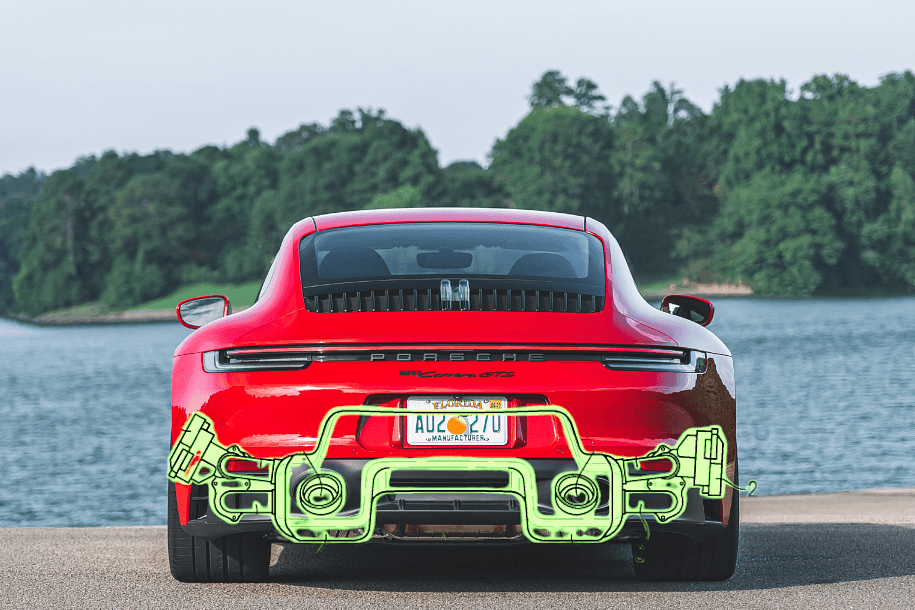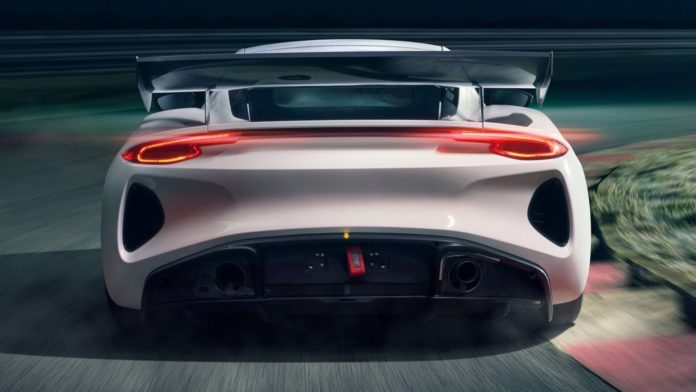A vehicle’s aerodynamic needs change depending on what it’s doing and how fast, and Lotus seems to have a smart solution to the problem.
Key Takeaways
- Lotus Cars patents an adaptive diffuser that adjusts based on speed.
- The diffuser could operate automatically or be controlled by the driver.
- Lotus emphasizes efficiency and claims that this active diffuser panel would be relatively inexpensive to produce.
Wuhan Lotus Cars, which makes the Lotus Emira, has filed a new patent that CarBuzz discovered at the World Intellectual Property Office. Therein, the automaker describes a sort of adaptive diffuser that can be adjusted based on predetermined parameters or the preference of the driver. Lotus is big on efficiency, a point proven by the remarkable charging speed of the Emeya. Efficiency will become increasingly important in the coming years, especially since Lotus will revive the Elise as an electric vehicle, and innovations like this new patent will be critical. That said, this patent is applicable to any sort of car, regardless of how it’s powered.

Lotus
The brainchild of Colin Chapman, Lotus Cars was the roadgoing arm of Lotus, founded in 1948. Priding itself on lightweight models with a driver focus, Lotus has become synonymous with the featherweight ethos promoted by Chapman of “Simplify, then add lightness.” Lotus also enjoyed great success in Formula 1, with seven world championships to its name. A controlling stake in Lotus was acquired by Geely in 2017.
- Founded
- 1948
- Founder
- Colin Chapman
- Headquarters
- Hethel, England
- Owned By
- Geely Holding, Etika Automotive
- Current CEO
- Qingfeng Feng
Simple Design
Lotus envisions a movable lower spoiler acting as a diffuser, with between 25 and 35 degrees of rotation possible. This movable flap would be controlled by at least two actuating arms, although the patent notes that more would be preferable to maintain even stress forces across the entire aerodynamic element.

Add CarBuzz to your Google News feed.
In order to hide the arms of the actuators from view, the patent also makes provision for “a beautification panel,” hiding the mechanics of the diffuser. The patent also claims that its design would be relatively cheap to produce but would still provide improved efficiency and aerodynamic performance as needed.
When It Would Work
The patent suggests that the diffuser could operate automatically, opening to decrease air pressure at the rear of the car once it reaches a predetermined speed and returning to its closed position when the speed drops below the chosen threshold. Alternatively, it could be operated by the driver. This may provide a similar effect to the DRS system on the Porsche 911 GT3 RS, albeit likely with far less of an effect on top speed; this is more about stability and downforce than drag. Interestingly, Ferrari is working on active rear aerodynamics using the exhaust system, something that Porsche is also pursuing. Clearly, there is vast room for efficiency gains at the rear of every sort of vehicle, but whether any of these ideas is feasible for mainstream production remains to be seen.

New Porsche Exhaust Muffler Will Work As A Diffuser
Why has nobody thought of this before?
Patent filings do not guarantee the use of such technology in future vehicles and are often used exclusively as a means of protecting intellectual property. Such a filing cannot be construed as confirmation of production intent.

